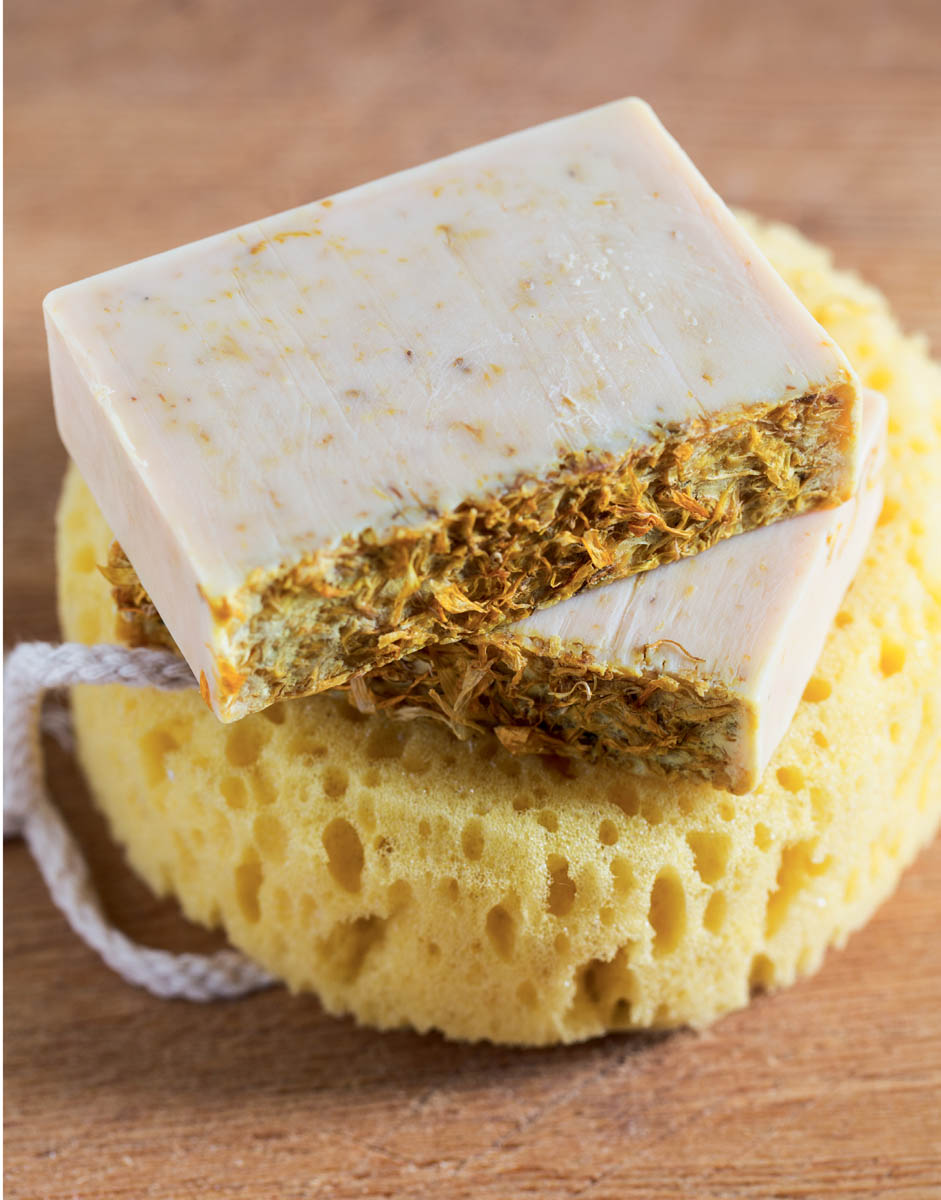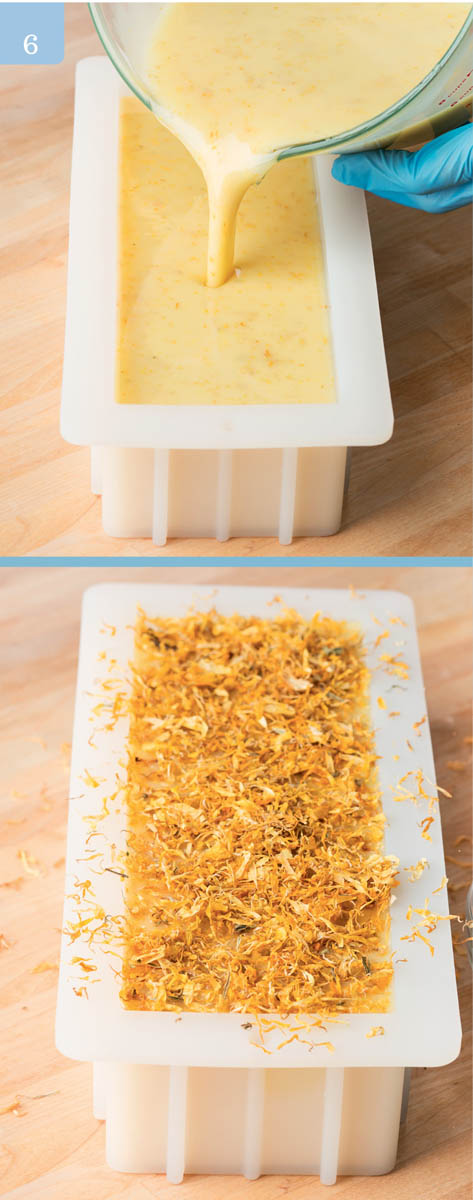Calendula Cleansing Bar
Calendula is a skin-loving additive derived from the flower of a type of marigold (Calendula officinalis). It has regenerative and restorative properties in addition to being a natural anti-inflammatory. It acts as a gentle cleanser and is great for those with sensitive skin, maturing skin, or young skin.
There are a couple of ways to incorporate the benefits of calendula into soap. Infusing the herb into oils called for in the recipe is one; another is adding the herb directly to the soap batter. In this recipe, both methods work together to create a bar with a small, nourishing lather and the soothing scent of lemongrass.
Approximately 12 bars

Ingredients & Equipment
Lye-Water Amounts
- 5.2 ounces sodium hydroxide (lye)
- 13.4 ounces distilled water
Base Ingredient Amounts
- 10.0 ounces calendula-infused sweet almond oil (see page 160)
- 30.0 ounces olive oil
Fragrance/Additives
- 2.3 ounces lemongrass essential oil
- 0.5 –0.8ounce dried calendula petals (about 1 cup by volume)
Equipment
- Standard equipment (see list on page 21)
- Double boiler
- Fine-mesh strainer
- Cheesecloth
- Silicone loaf mold
Soap Safely!
- Work in a well-ventilated area. Do not breathe any fumes!
- Wear long sleeves, long pants, and closed-toe shoes.
- Don safety goggles (regular glasses are not sufficient protection) and rubber gloves during the entire soapmaking process.
- Keep children and pets away from your workspace.
Instructions
Make the Calendula-infused Sweet Almond Oil
In a double boiler, pour 10.5 ounces of sweet almond oil over 0.3 ounces of dried calendula petals (about 1⁄3 cup by volume). Turn heat on low and allow to sit for 1 to 4 hours. The longer the infusion sits on the heat, the stronger it becomes. Pour the infusion through a fine-mesh strainer lined with cheesecloth to remove as much of the debris as possible. Infusing slightly more oil than a recipe calls for ensures that the recipe amount is covered, as some oil will be absorbed by the flowers.
Make the Soap Mixture
- 1. Add the lye to the water (never the other way around), stir gently, and set aside until clear.
- 2. Combine the olive oil and 10 ounces of the calendula-infused sweet almond oil.
- 3. When the oils and the lye-water are both below 120°F, add the lye-water to the oils, pouring it over a spatula or the shaft of the stick blender to minimize air bubbles. Tap the stick blender a couple of times against the bottom of the bowl to release any air trapped in the blades. Do not turn on the stick blender until it is fully immersed. Stick-blend until light trace (the consistency of a melted milkshake) is achieved, about 2 minutes. Note: Trace may take longer than usual due to the high olive-oil content.
- 4. Add the lemongrass essential oil. Continue blending with the stick blender until a medium trace (the consistency of cake batter) is achieved.
- 5. Reserve a couple of tablespoons from the cup of dried calendula petals to sprinkle over the top of the soap. Add the rest of the petals to the soap batter and stir in well with a whisk or spatula.

Pour into the Mold
- 6. Pour the soap batter into the silicone loaf mold.

- 7. Sprinkle the remaining calendula on top of the soap for a rustic look. With a gloved hand, press the dried calendula gently into the soap so that it adheres.
Final Steps
- 8. Cover the soap with plastic wrap or a cardboard lid. Insulate the entire mold by wrapping it in a large towel and set it aside for at least 24 hours at room temperature before unmolding. Unmold within 3 to 5 days.
- 9. Cut the soap into bars and allow to cure in a well-ventilated area for 4 to 6 weeks, turning the bars over every few days to ensure that they cure evenly.